The dichotomy between documenting and experiencing an event is a predicament faced by even the most established photographer, the continual dilemma of where to draw the line – when to shoot, and when to put the camera down.
This dilemma however, came early on in 20 year old photographer Johnny Griffiths’ career.
On the 13th April 2015, his partner Hannah was diagnosed with stage four Hodgkins Lymphoma.
“The hardest thing was to find that balance between being a documentarian and being a boyfriend,” says Griffiths. “I had to keep reminding myself what the actual importance of it was.”
His series It’s Cancer, follows the unpredictable summer the couple faced as Hannah carried out her treatment. Within weeks of Hannah’s diagnosis, the couple had returned to her home in Reading to begin a six month course of chemotherapy.
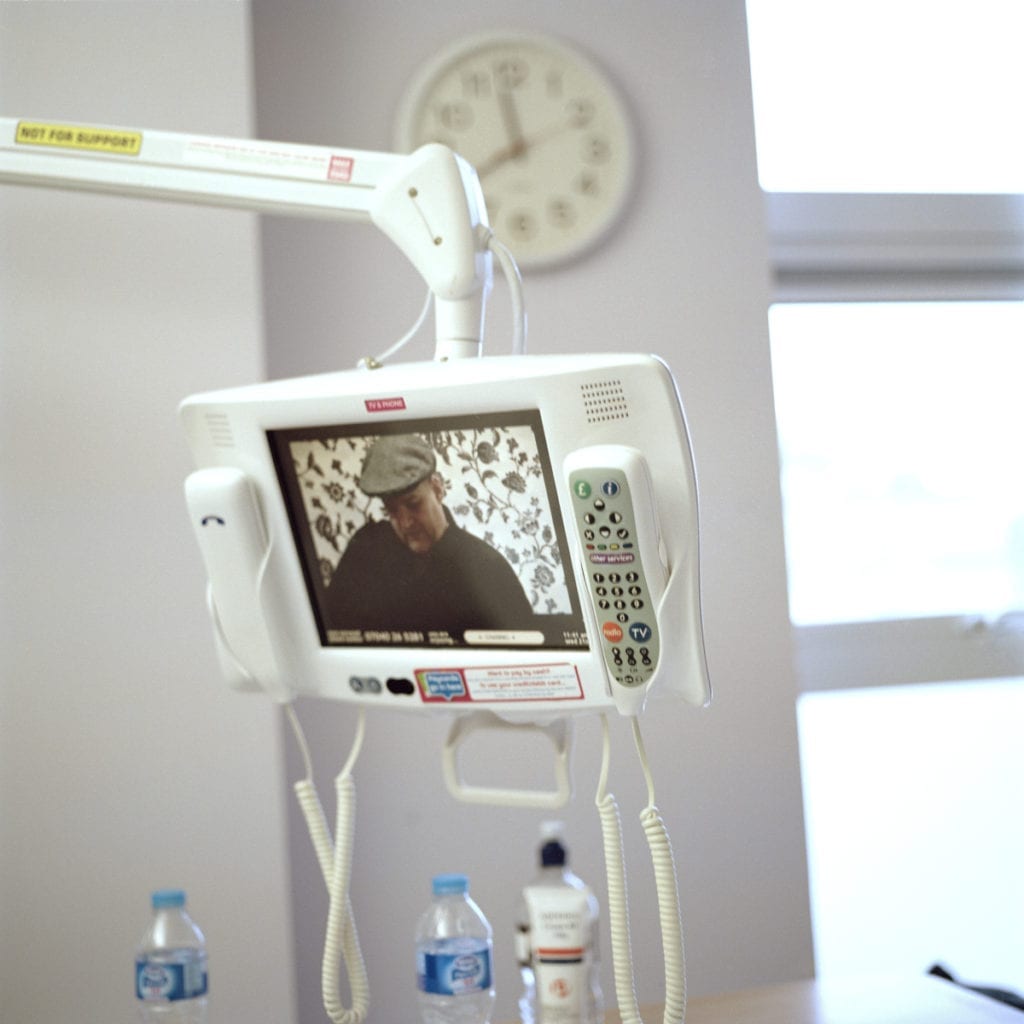
“We were just being normal 20 year olds, having a good time and then it just kind of happened quite out of the blue. Hannah went to Berlin for her 20th birthday and on the flight back she became quite ill, so she went to hospital. One thing led to another and they diagnosed her there and then.”
It’s Cancer is a collection of 25 images that capture the repetitive nature and conflicting realities cancer cruelly bestows.
Glimpses of the monotonous spaces of the hospital and Hannah’s home, to the more touching everyday moments of Hannah applying lipstick and having a bubble bath, are juxtaposed against images of her lent over the toilet and attached to multiple IV drips – each photograph is as powerful as the next, resonating telling with Hannah’s emotive resilience and the fragility of her situation.
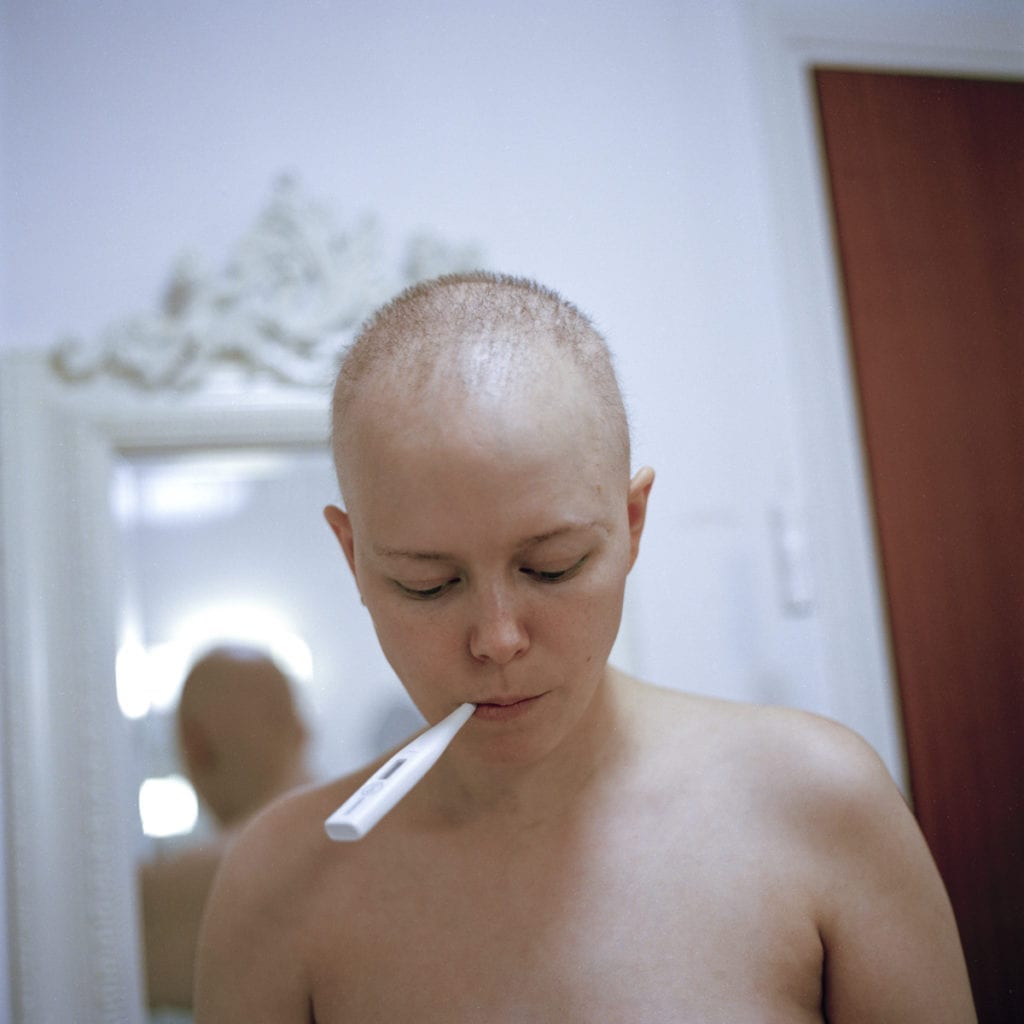
However, Griffiths’ images were never originally intended to be taken. But with the pressures of studying photography at Falmouth University to contend with, it was Hannah who actively encouraged him to begin documenting her treatment, to prevent him from failing his course.
“I was always a bit skeptical about doing it, just because I felt disrespectful to her family and friends, but Hannah kept telling me ‘you should be taking pictures, it would be amazing so you should start documenting it’. I thought I may as well take some and then I really got stuck into it.”
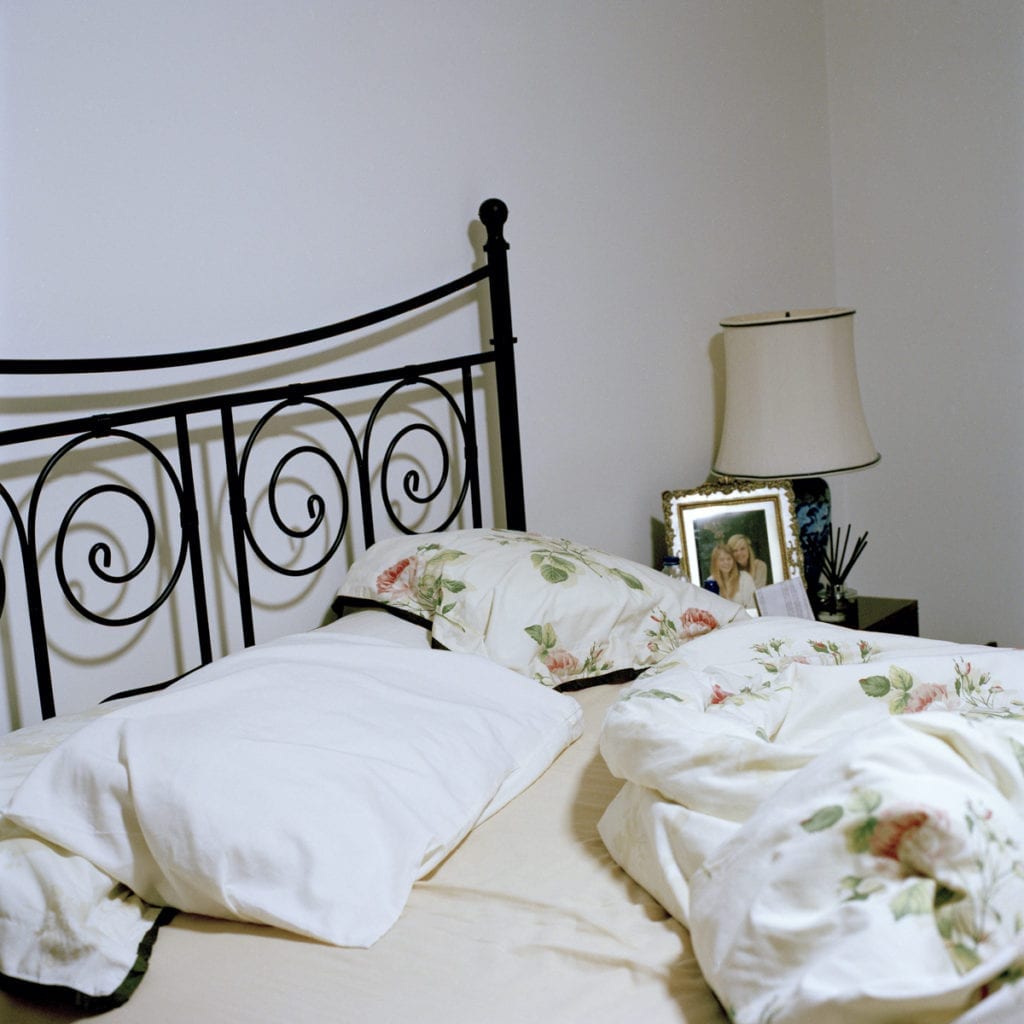
“It almost became an escape for me from what was going on. It wasn’t something I ever thought I was going to do, but I’m glad it did.”
The result was a collaborative no holds barred account of Hannah’s experience, with one exception.
“Hannah’s naturally very jokey about everything, so she wanted cancer to be represented as something that isn’t so serious, that it can be funny, and that she could still take the piss out of herself. Hannah didn’t want it to look like this black and white dark aesthetic that a lot of cancer photography’s been.”
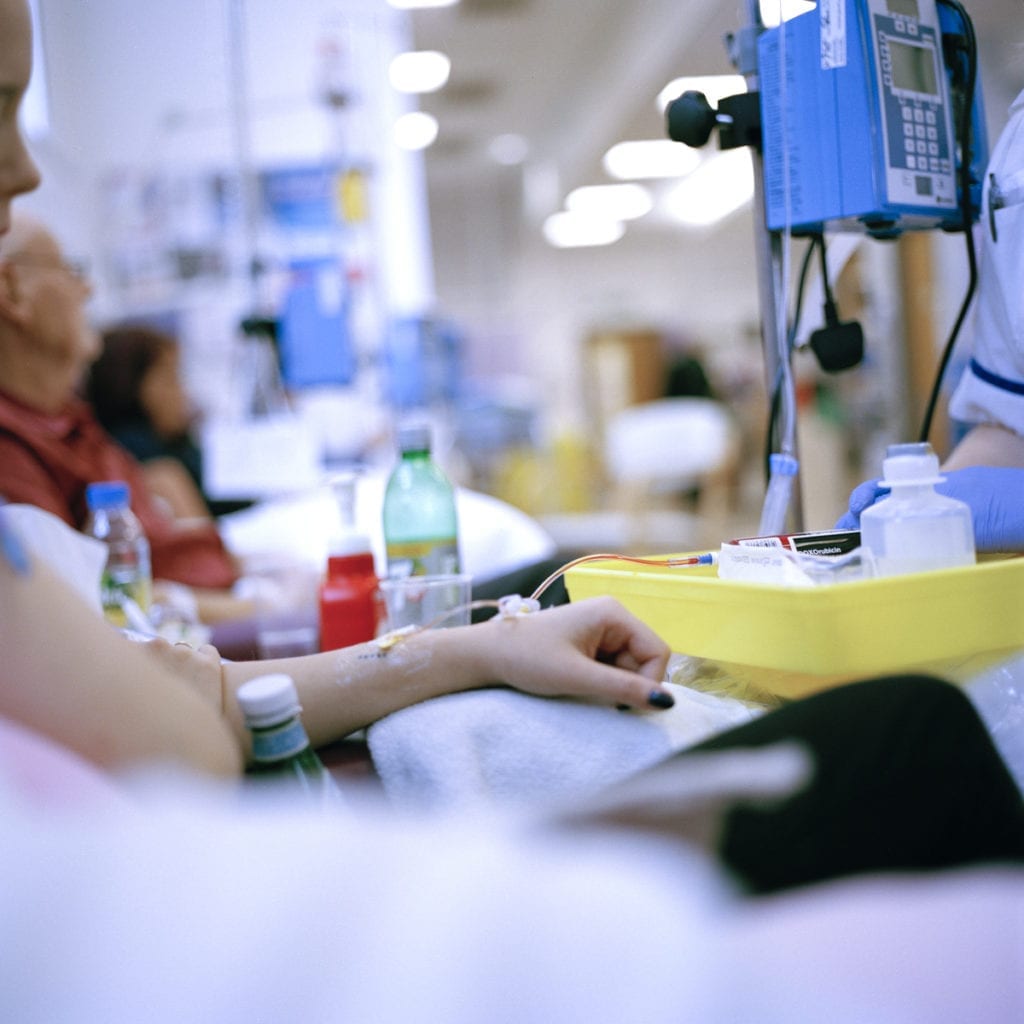
Griffiths is clear about subverting the normative ‘doom and gloom’ visual narratives he had previously seen surrounding cancer, keen instead to make sure his images were as unbiased as possible for a partner and a photographer to be.
This emphasis is apparent in the many joyful photograph’s that refreshingly focus on the familiar aspects of being a normal 20 year old young woman, not just a patient.
“Through the whole project I was wanting it to change people’s perceptions. Being naive before cancer, you just think of it as a death sentence, when it’s really not. There are so many stories of cancer, and I just wanted to show that when you hear ‘cancer’ it’s not something to be so afraid of, there are plenty of people happy and well after going through it.”
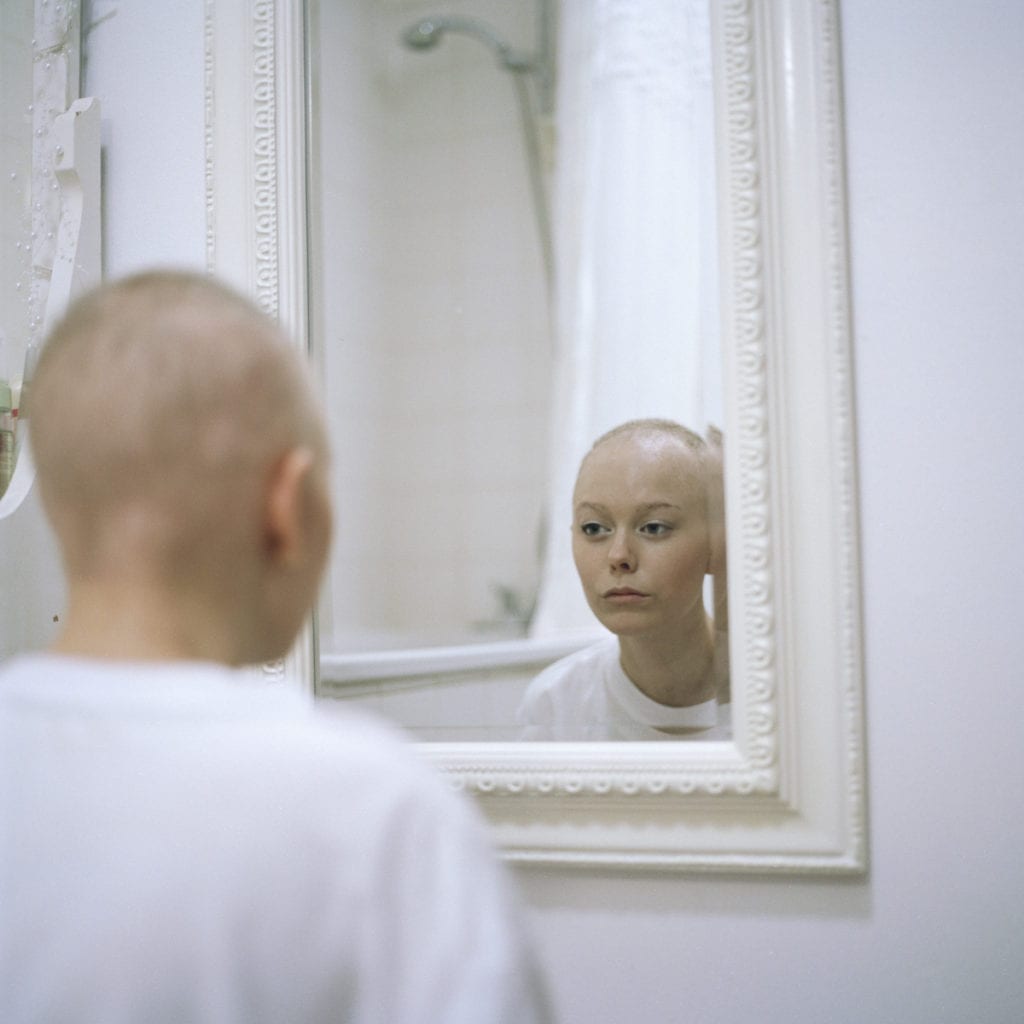
“I didn’t want to sugarcoat the fact that cancer is a horrible thing to go through, I just wanted to show all aspects of it, to show everything quite honestly, which I feel I have achieved.”
Hannah has recovered from the cancer, and is now in remission. But were there any moments where the line had to be drawn?
“There were a lot of times that I could have taken my camera out and taken these photos that would have been no doubt amazing, powerful photos but I just felt I wanted to witness it myself,” says Griffiths. “When Hannah was told all the cancer had gone, I didn’t want to experience it through a camera I wanted to be in the moment, to be there and be happy with her.”
For more on Johnny Griffiths’ work, go here.

